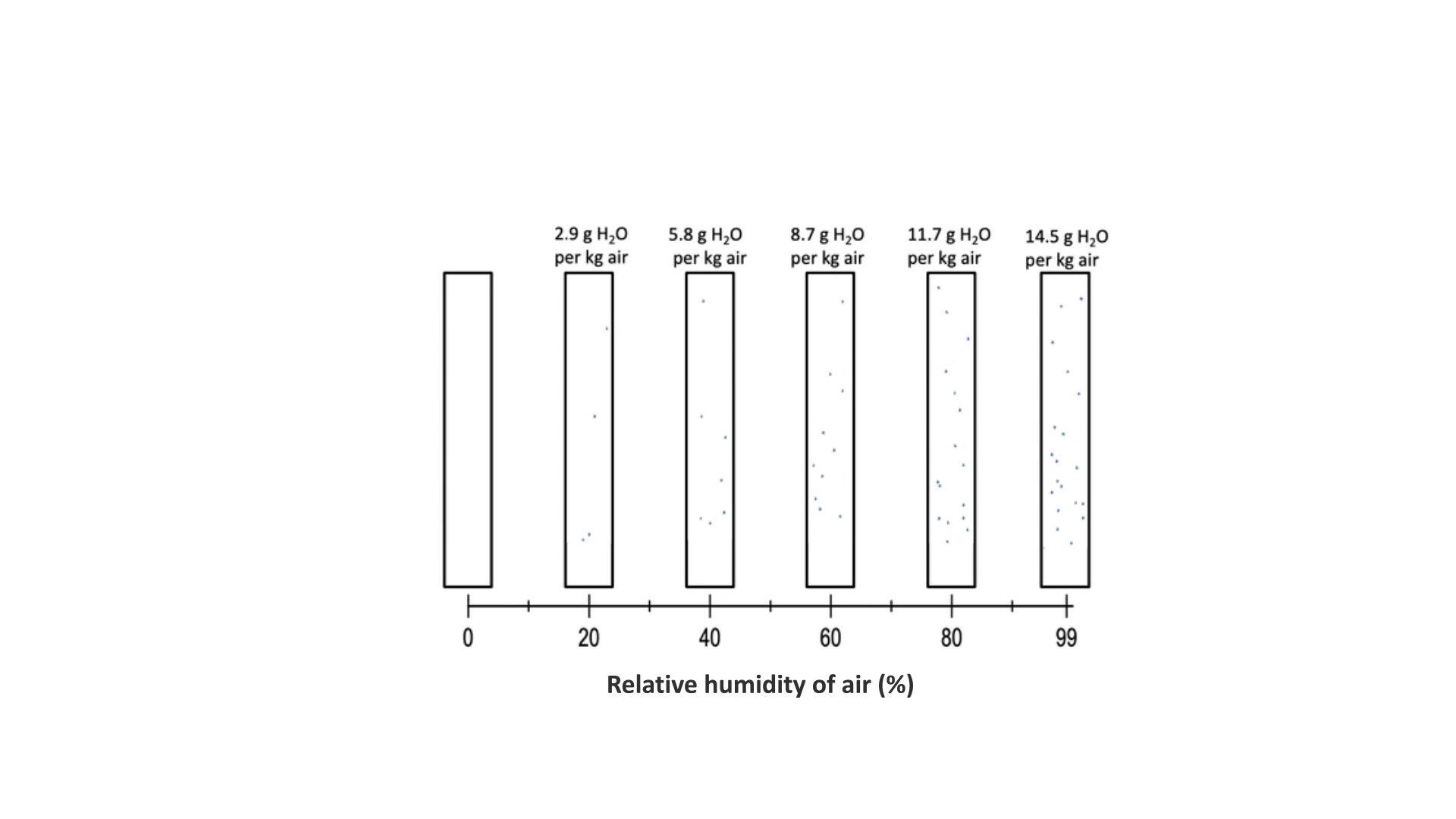Reaching equilibrium
Genebanks rely on the movement of water molecules between the inside of a seed and the air around it. The relative humidity of the air, a measure of how moist the air is, has a direct influence on how much water there will be inside seeds. The relative humidity of the air can be measured using a hygrometer.
When seeds are dried in preparation for storage, manipulating the relative humidity of the air around them can ensure that an equilibrium is reached where the seeds are dry enough to survive well in storage. When they are taken out of storage for regeneration, moistening them can give the seeds a suitable water content to germinate. Temperature is also important, but assume for the moment that the surrounding temperature is a constant 20°C.
Watch the animation to find out how water moves in and out of seeds as the relative humidity of the surrounding air changes.

Transcript: Video 2: equilibrium rehydration
Imagine this is a container holding one kilogram of dry air.
As you add water vapour to the air, the water molecules move among the air molecules.
As you add more water vapour, the relative humidity increases: there are more water molecules in the air.
Until you reach saturation - the air cannot hold any more water vapour.
What happens when you add some dry seeds to this system?
Like the air, the seeds contain some water molecules.
Even at equilibrium, some of the water molecules in the seeds have enough energy to move out of the seed and into the air.
But as long as the relative humidity of the air does not change, equilibrium is maintained between water in the seed and water in the air.
Here, 5.5% of the wheat seed’s fresh weight is water.
If you increase the relative humidity of the air, more water will move into the seed.
At 20°C, when there’s five point eight grams of water in the air, eight point one percent of the seed’s fresh weight is water.
Every increase in the relative humidity of the air brings a corresponding increase in the water in the seed.
When there’s 14g of water in the air, more than 20% of the fresh weight of the seed is water.
In many types of seed, you can easily see the difference, as they are visibly larger.
This seed is now ready to germinate.
Please use the box below to describe how changing the amount of water in the air surrounding seeds changes the amount of water inside those seeds. You should spend up to ten minutes on this. If your reflections on the animation raise any questions, please post them on the Forum, where the course moderators will be able to help you.
When you are ready, press 'reveal' to see our comments.
Discussion
The amount of water in the surrounding air reaches equilibrium with the amount of water vapor in the seeds. By manipulating the relative humidity of the air around a batch of seeds, you can alter the amount of water available for biochemical reactions inside those seeds. The fresh weight of the seeds increases as they take in more water. The animation shows hydration: the reverse process, dehydration, is also possible.
Why does water activity matter?
